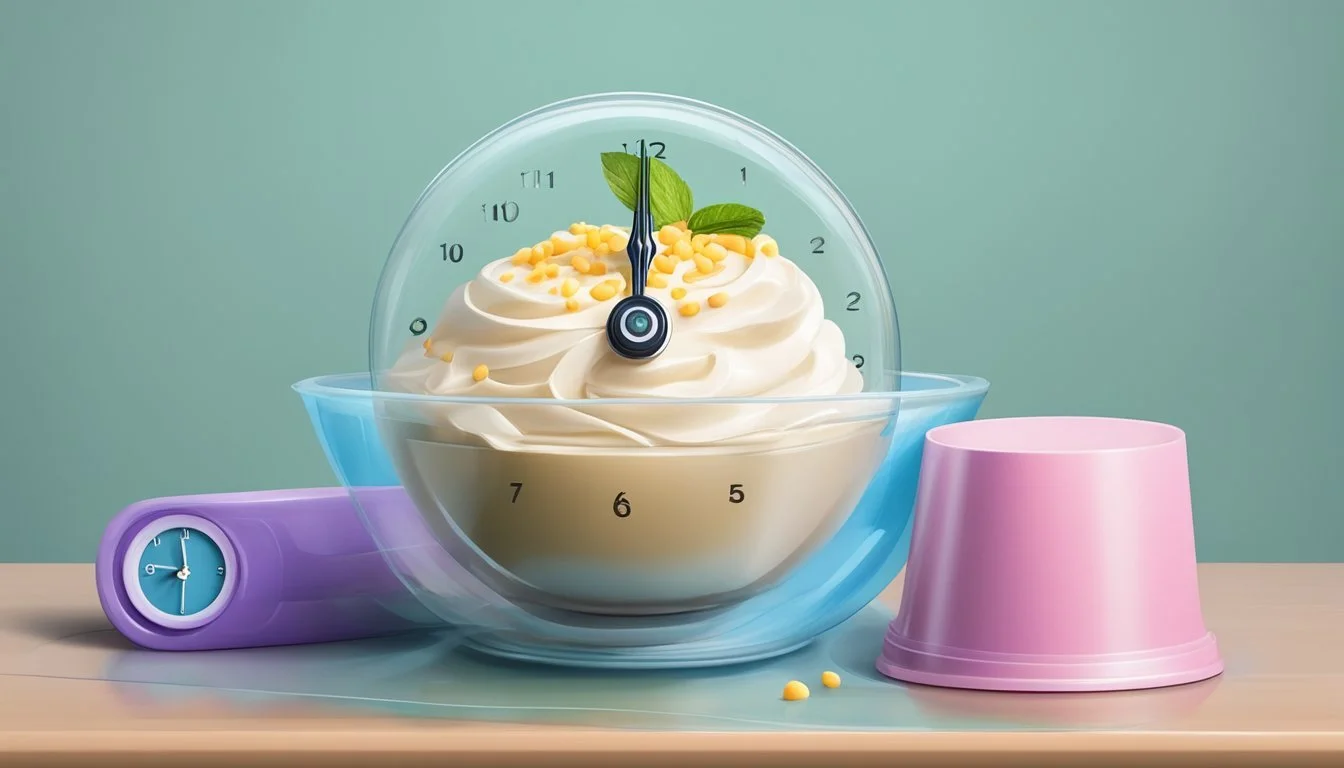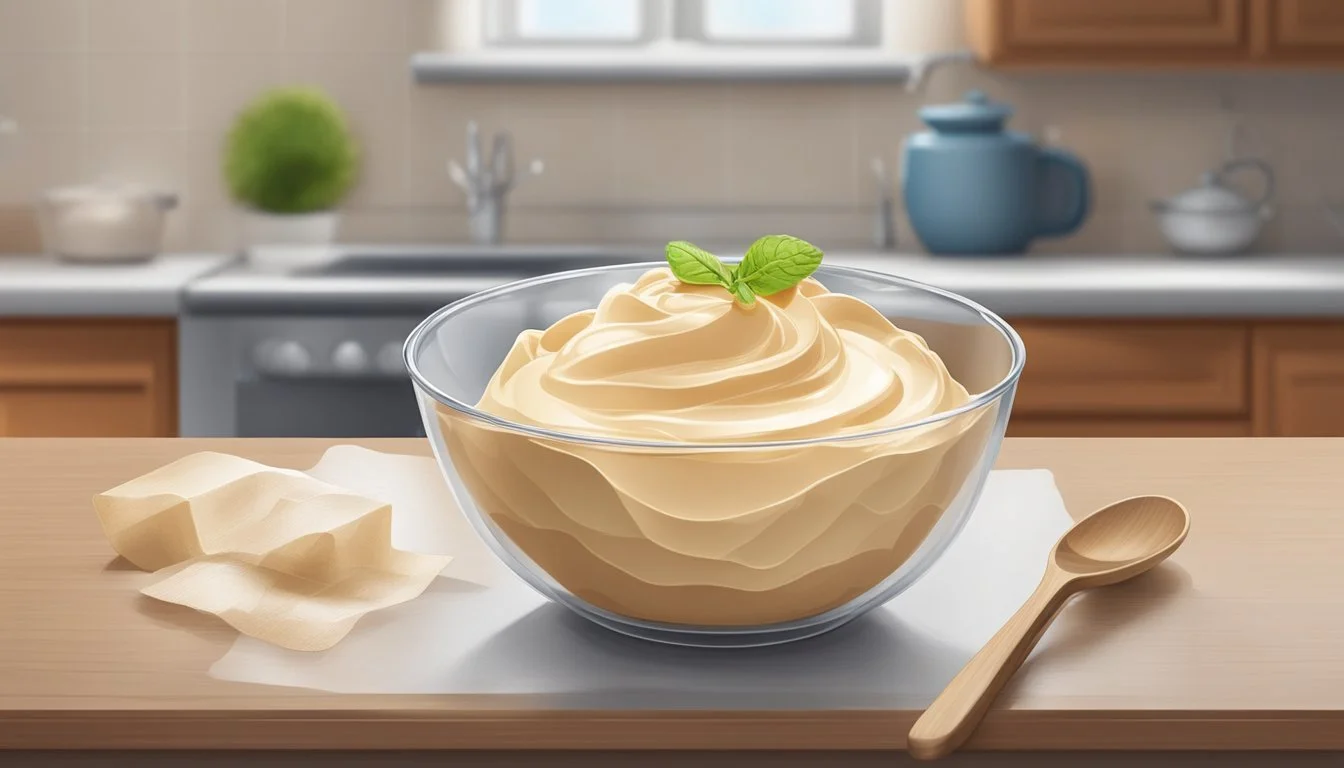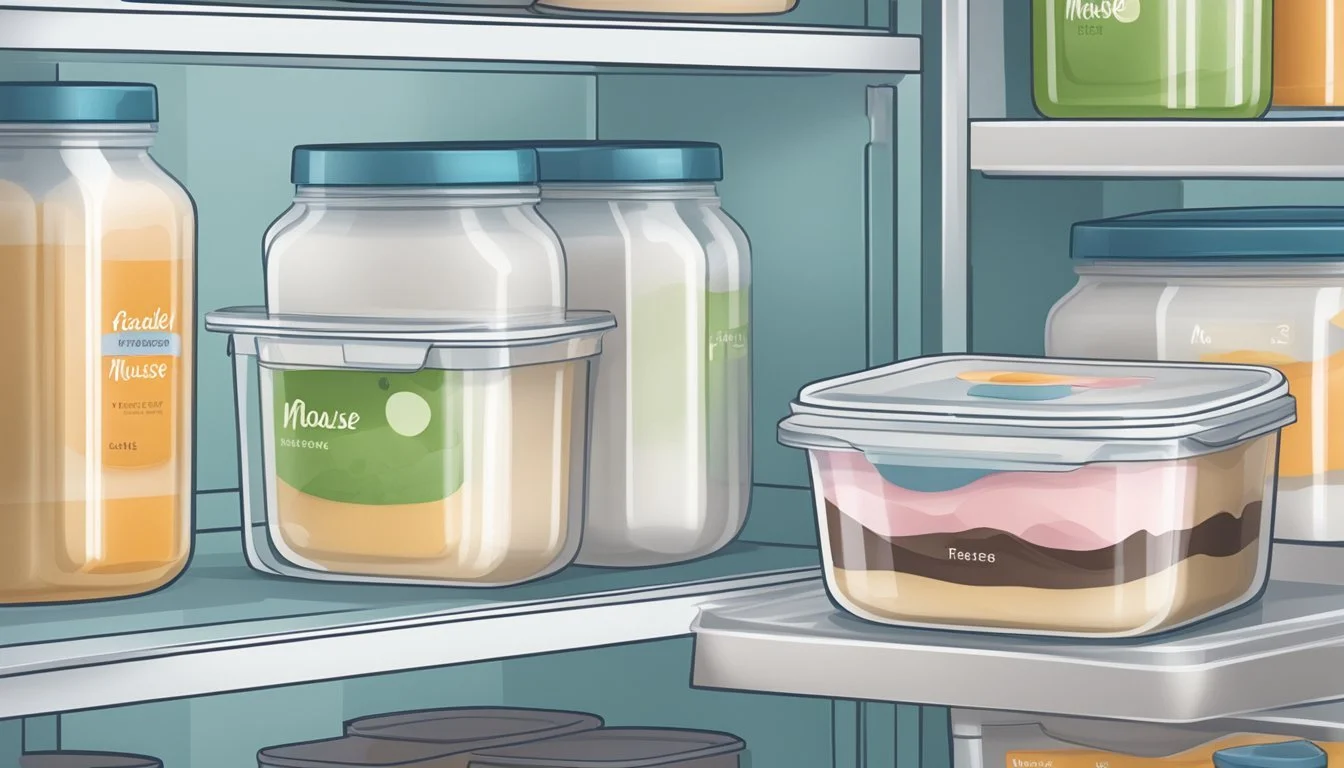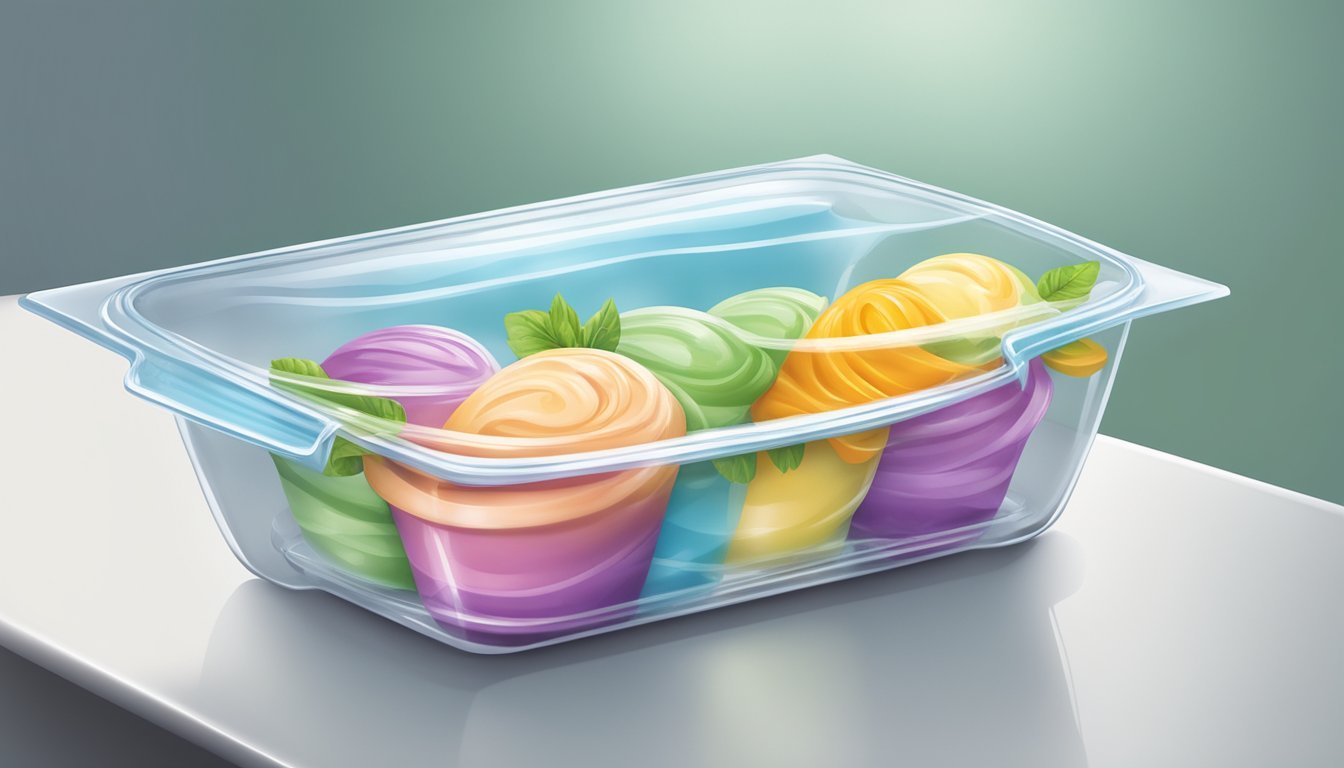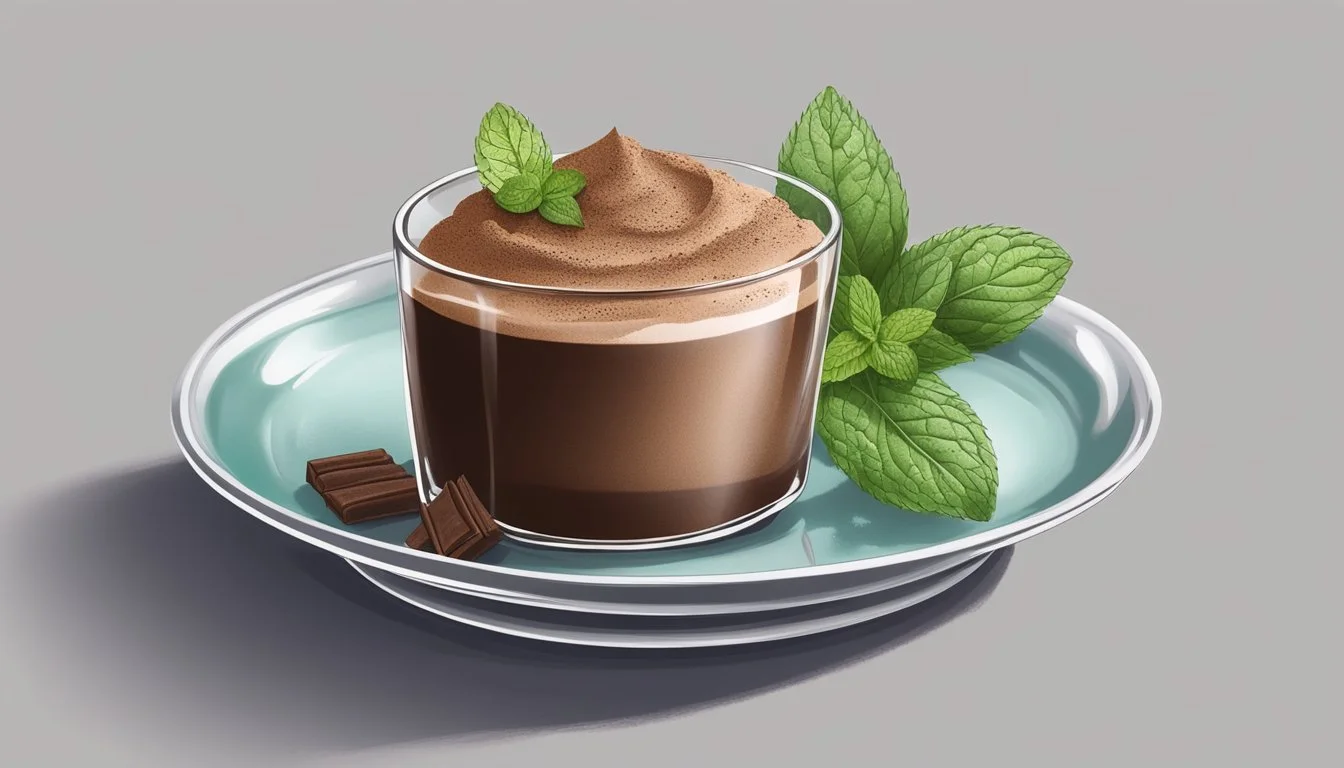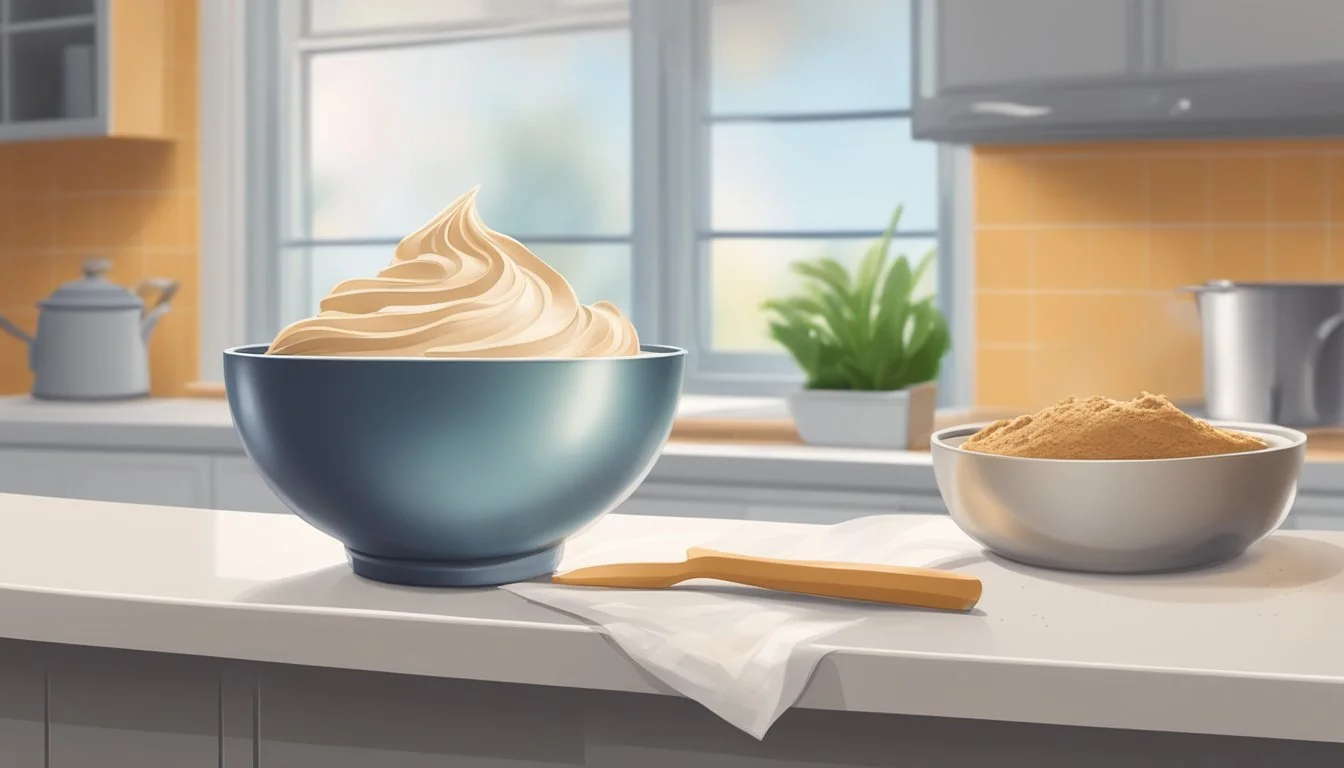How Long Does Freshly Prepared Mousse Last?
Shelf Life and Storage Tips
Mousse, a delightful and airy dessert, is favored for its creamy texture and versatility in flavor. Whether one opts for a decadent chocolate mousse or a delicate mousse cake, the technique of preparation involves the incorporation of air to give it that characteristically light and fluffy consistency. As with many fresh desserts, the shelf life of mousse is a crucial consideration for both taste and food safety.
The longevity of mousse when refrigerated is typically between 3-5 days. The key to maximizing its freshness is to store it in an airtight container, which helps to prevent contamination and the development of off-flavors. Furthermore, the refrigerator should maintain a temperature ranging from 38°F to 40°F (3°C to 4°C) to inhibit bacterial growth that could hasten spoilage.
Understanding Mousse
Mousse is a delicate and airy dessert known for its smooth texture and rich flavor profile. This section discusses its definition and the common ingredients pivotal to its creation.
Defining Mousse
Mousse, from the French term meaning "foam," is a culinary dish characterized by its light and fluffy texture. Typically served chilled, it falls into the category of soft desserts and can range from sweet to savory, with sweet variations being the most popular. It incorporates air bubbles to give it a fine and creamy consistency, distinguishing it from other denser confections.
Common Ingredients
The quintessential mousse is structured around key ingredients that provide its signature texture and taste. Below is a list detailing these essential components:
Cream: Heavy cream is commonly whipped and folded into mousse mixtures to introduce air, contributing to the light and creamy texture.
Eggs: Eggs are a staple in making mousse, especially the yolks, which impart richness, while the whites are beaten to a foam to add airiness.
Sugar: To bring sweetness and enhance the flavor, sugar is incorporated into the mousse mix.
Gelatin: Often used as a stabilizer in mousse, gelatin ensures that the dessert sets properly while maintaining its delicate structure.
When creating specific types of mousse, such as chocolate mousse, ingredients like dark chocolate are melted and mixed with the other components to achieve a deep, chocolatey essence. Usage of whipped cream is also a common practice in both chocolate and other mousse variations, providing a light and airy consistency, but it can affect the mousse's shelf-life.
Preparation Techniques
The techniques used in preparing mousse are critical to achieving the ideal texture and consistency. Proper mixing and the incorporation of air are essential to ensure the mousse has the desired lightness and stable structure.
Mixing and Consistency
When preparing a mousse, one starts by melting the primary flavor ingredient, such as dark chocolate for chocolate mousse, ensuring it is smooth with no lumps. Ingredients like eggs and sweeteners are then combined – an approach that necessitates precision. For example, in a chocolate mousse, whole eggs or egg yolks may be warmed over a water bath to a safe temperature of approximately 140°F. During this process, continuous whisking is vital until the mixture appears pale and thick, with all sugar dissolved, to achieve consistency.
Incorporating Air for Texture
The incorporation of air into the mousse mixture is what gives mousse its signature airy texture. This is typically done through the folding process. Ingredients that have been whipped, such as egg whites or whipped cream, are gently folded into the main mixture using deliberate but careful strokes. This helps to maintain the volume and lightness. An over-mixed mousse can lose air and result in a dense texture, while under-mixing might not provide enough structure for the mousse to hold its shape. The goal is to achieve a homogeneous mixture that still retains a significant amount of the air introduced during the whipping stage.
Safe Food Handling
When preparing fresh mousse, it is essential to prioritize food safety, specifically when handling raw eggs, to prevent the risk of foodborne illness. Maintaining a strict hygiene protocol is equally important for the safety of the mousse.
Raw Eggs Caution
Freshly prepared mousse often contains raw eggs, which can harbor salmonella bacteria and pose a health risk if not handled correctly. To mitigate this risk:
Purchase: Always buy eggs from a reputable supplier with a focus on safety and freshness.
Storage: Refrigerate eggs at 40°F or below, and use them within three weeks for optimal safety.
Preparation: Use pasteurized eggs when possible, and avoid cross-contamination by separating eggs from other foods.
Hygiene and Safety
Maintaining proper hygiene and safety standards is crucial during the preparation and storage of mousse:
Cleanliness:
Wash hands with soap and water for at least 20 seconds before and after handling ingredients.
Clean all utensils, work surfaces, and equipment thoroughly before use.
Storage:
Refrigerate the mousse promptly at 40°F or below.
Consume or discard the mousse within 1 to 2 days for best quality and safety.
Storing Freshly Prepared Mousse
Properly storing mousse is crucial for maintaining its quality and safety. Refrigeration is necessary for preserving its freshness, while freezing offers a longer-term option.
Refrigeration Best Practices
Freshly prepared mousse should be stored in the refrigerator at a temperature of 38°F to 40°F (3°C to 4°C). This temperature range is key in slowing down bacterial growth and preserving the quality of the mousse. For optimal storage:
Place mousse in an airtight container to protect it from absorbing other flavors and to prevent it from drying out.
If an airtight container is not available, cover the mousse with plastic wrap, ensuring it is in direct contact with the surface to create a seal.
Mousse stored in a refrigerator typically remains fresh for 3 to 5 days. However, if it contains fresh fruit or dairy, consumption within 2 days is recommended to avoid spoilage.
Freezing and Thawing
For longer storage, mousse can be frozen. Here's how to properly freeze chocolate mousse or other types:
Transfer the mousse into a freezer-safe container to avoid freezer burn.
Seal the container tightly or cover with plastic wrap before closing the lid to reduce air exposure.
Frozen mousse can last approximately 2 months in the freezer. When ready to serve, transfer the mousse to the refrigerator to thaw slowly. Avoid thawing at room temperature as it can affect the texture and taste of the mousse. Thawing in the refrigerator ensures a gradual temperature change, preserving the mousse's quality.
Shelf Life and Spoilage
When preparing mousse, understanding its shelf life and recognizing signs of spoilage are vital to ensure food safety and enjoyment. Given its ingredients, mousse can be quite perishable.
Refrigerator Shelf Life
The shelf life of mousse in the refrigerator is typically 3-5 days. To maintain optimal freshness, it should be stored at a temperature of 38°F to 40°F (3°C to 4°C). If mousse contains fresh ingredients, like fruit or dairy products, it should be consumed within 2 days. Stabilized versions with ingredients such as gelatin may last up to 5-7 days.
Signs of Spoilage
Mousse that has gone bad often exhibits noticeable changes. A sour smell, alterations in texture, and discoloration can all be indicators that the mousse is no longer safe to consume. If visible mold growth appears, the product should be discarded immediately to avoid health risks.
Serving and Presentation
When presenting a freshly prepared mousse, maintaining its texture and flavor is essential. Serving temperature, choice of accompaniments, and decoration technique are all central to enhancing the eating experience.
Serving Temperature
A mousse should be served chilled to ensure it retains its structure and provides a refreshing taste. The ideal serving temperature is between 38°F to 40°F (3°C to 4°C), which is the standard refrigeration range. Mousse served at room temperature may become too liquid, losing its intended texture.
Accompaniments
The accompaniments chosen to serve with mousse can greatly enhance its flavor profile. Fresh berries are a popular choice as they add a tart contrast to the sweetness of the dessert. For a richer flavor, a butter-based sauce might complement certain mousse varieties well.
Fresh Berries (e.g., strawberries, raspberries)
Butter sauces (optional)
Whipped cream (for extra sweetness)
Decoration Advice
Mousse decoration should not only be visually appealing but also complement the flavors of the dessert. Here are some tips:
Use berries to add color and a fresh flavor
Edible flowers provide elegance without adding competing flavors
A light dusting of cocoa powder or powdered sugar can enhance the sweetness minimally without overwhelming the dish
Remember, mousse decorations should be applied just before serving to maintain freshness and prevent any unwanted changes in texture or flavor due to room temperature exposure.
Final Considerations
In ensuring the longevity and quality of freshly prepared mousse, one must heed the recipe specifics and appropriate storage practices. Variations in ingredients and preparation methods can significantly influence shelf life, while storage mishaps can swiftly compromise the mousse's intended texture and flavor.
Recipe Variations
Different recipes for mousse may require specific consideration due to the variety of ingredients used. For instance:
Dairy Products: Mousses made with dairy, such as cream cheese or whipped cream, should be consumed within 2 days to maintain optimal freshness.
Sugar Content: Higher sugar content in a recipe can act as a preservative, potentially extending the shelf life by inhibiting microbial growth.
Additives: Recipes including stabilizers like gelatin can allow the mousse to last longer in the fridge, typically up to 5-7 days.
Mousses that deviate from the traditional compositions—whether through incorporation of alternative dairy products, reduced sugar, or omission of preservatives—should be monitored closely for changes in flavor and smell, which are strong indicators of spoilage.
Troubleshooting Common Issues
Storing mousse involves more than refrigeration; one must address several factors to avoid common issues such as drying out or the formation of a crust.
Temperature: The refrigerator should be set to around 38°F to 40°F (3°C to 4°C) to prevent bacterial growth and maintain texture.
Container: An airtight container is vital to prevent the mousse from absorbing odors and drying out. A layer of plastic wrap directly on the surface can also help.
Observation: Regularly check the mousse for any signs of spoilage—off flavors, an unpleasant smell, or visual signs of dehydration or mold formation.
By considering these factors thoroughly, one can extend the enjoyable life of their homemade or store-bought mousse without sacrificing the delicate balance of flavor and creamy consistency that characterizes this dessert.


